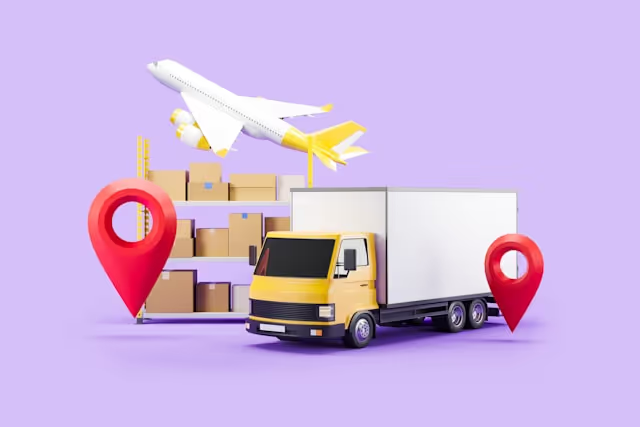A recent study revealed that 85% of organisations want to reduce their greenhouse gas emissions, yet only 9% can accurately track their total emissions across all activities.
This is where carbon tracking comes in—monitoring and analysing the CO2e emissions produced by an entity or its operations. With the help of specialised software, modern businesses can automate this process, making it more precise, frequent, and manageable. This automation ensures reliable insights for carbon accounting, sustainability initiatives and reporting.
What is carbon tracking software?
Leading carbon tracking software prioritises reduction, offering certified calculations that help pinpoint the most impactful actions for decreasing emissions.
Explore Plan A’s Carbon Management Platform through the interactive demo below:
The 9 best carbon tracking software
Searching for the right carbon tracking software to reach your business's sustainability goals? Here’s a list of the 9 leading software providers in 2025:
1. Plan A
What distinguishes Plan A is its focus on personalised service and reduction-first philosophy, which helps businesses efficiently minimise emissions. The tracking platform is trusted by well-known brands like N26, Chloé, Flix, and BMW, positioning Plan A as a leader in the transition to net-zero.
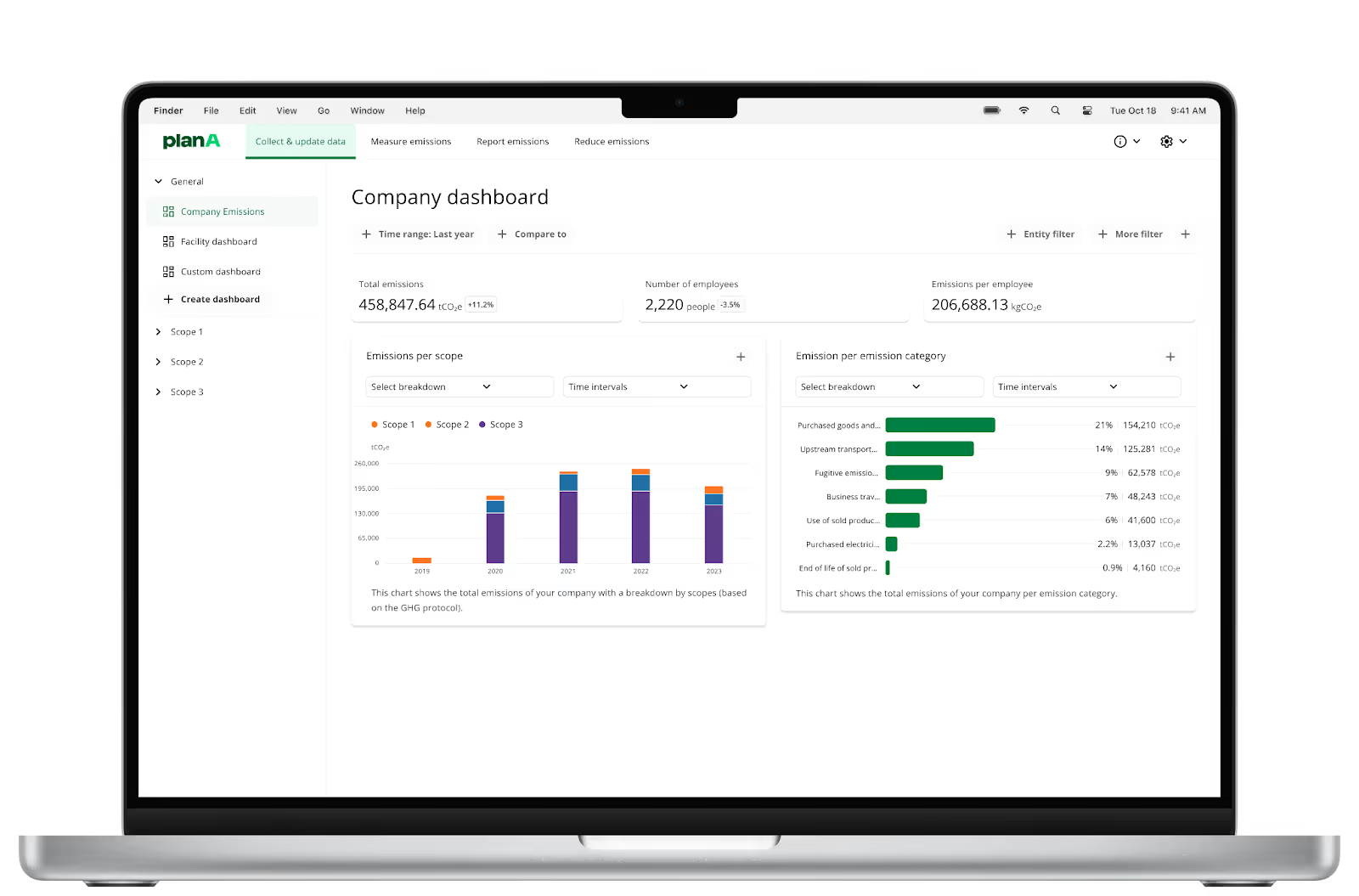
2. IBM Envizi
Envizi, now part of IBM, is a robust emissions management and sustainability software. It helps organisations monitor, analyse, and report their emissions data across global operations, with tools that assist in compliance and the pursuit of sustainable practices.
3. Salesforce's Net Zero Cloud
Salesforce's Net Zero Cloud offers a platform designed for carbon tracking with robust automation and data integration features. While its scalability and adaptability to various industries are subjects of discussion, its partnerships with external firms add value.
4. Microsoft Sustainability Cloud
Microsoft Sustainability Cloud offers tools for recording and analysing environmental data through its Sustainability Manager. Targeted at mid-market and SMB clients, its broader applicability for larger enterprises remains under review.
5. Sami
Sami is a carbon management platform that enables businesses to measure and manage their carbon footprint. It offers data collection, emission factor application, and compliance reporting with various standards. The software uses technology for data reconciliation and supports CSRD compliance. Sami also aids in creating reduction trajectories and generating regulatory reports, including iXBRL, while providing tools for product carbon footprint analysis.
6. IBM's Environmental Intelligence Suite
The IBM Environmental Intelligence Suite is a data and emissions management tool that leverages AI for fundamental climate risk analytics. It features tools for risk assessment and response, integrating carbon accounting into business processes. However, it may lack the level of personalisation required by certain organisations.
7. Workiva
Workiva is primarily known for its ESG reporting capabilities, with a dedicated solution for carbon tracking. Workiva Carbon allows businesses to aggregate, manage, and report emissions data efficiently.
8. Cority
Cority’s Environmental Cloud aids companies in managing environmental compliance and data, encompassing aspects like air, water, waste, and chemical management. While its focus is broader than carbon, it offers solid tools for tracking carbon emissions as part of its sustainability suite.
9. Sphera
Sphera by The Blackstone Group is a comprehensive ESG and risk management solution. It centralises emissions tracking and reporting, facilitating better integration of safety and sustainability measures across organisations.
Key features to look for in carbon tracking software
When selecting a carbon tracking solution, businesses should consider these six critical features:
1. User-friendly and robust data collection
For effective carbon tracking, it's essential to have interfaces that support manual data entry, bulk data uploads, and seamless API connections. These features ensure that data remains clean and accurate while minimising errors during collection.
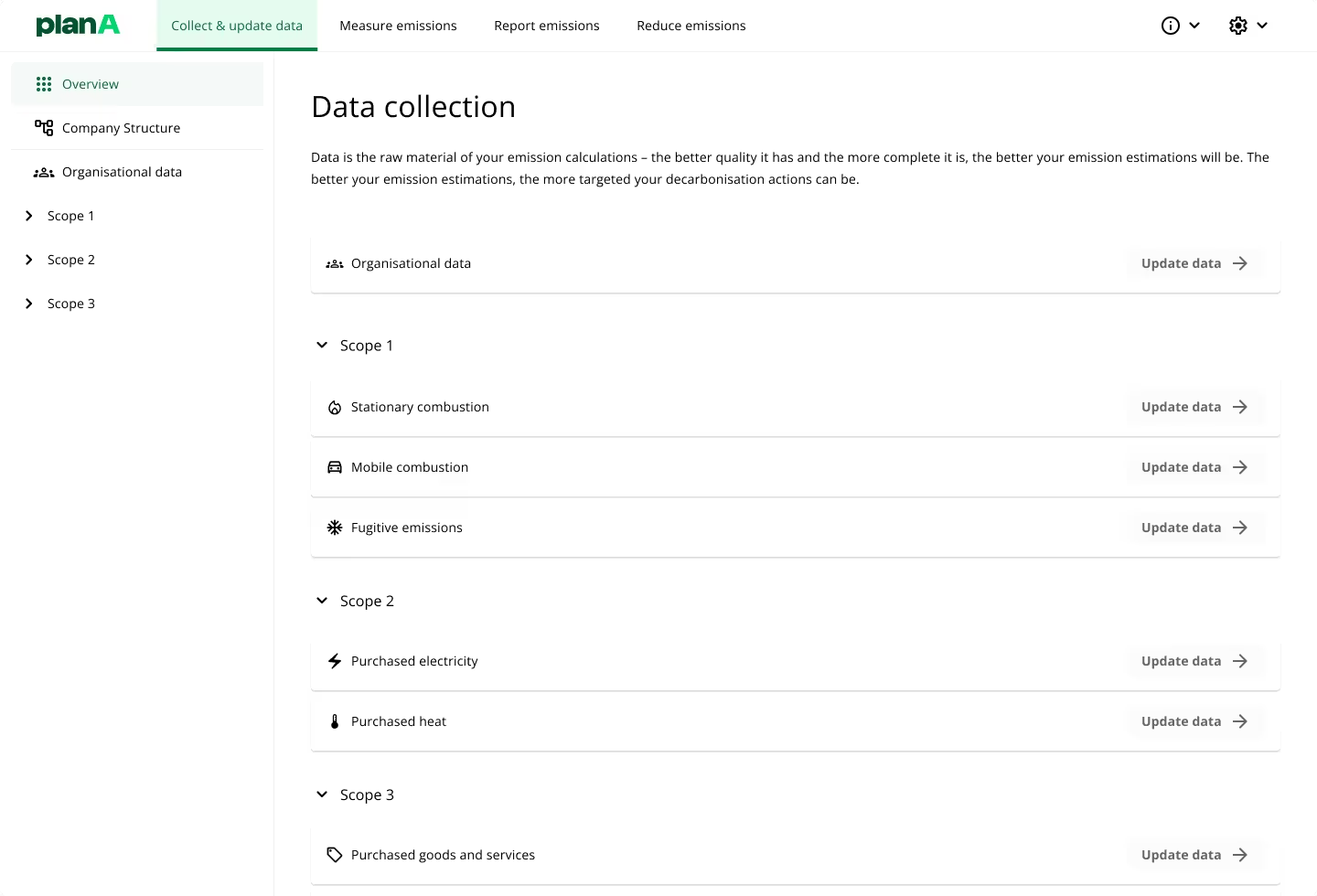
2. Accurate emissions measurement
A versatile tool for carbon tracking enables companies to monitor their greenhouse gas (GHG) emissions across various sources, including energy use, transportation, and waste. This capability helps organisations keep a close watch on their environmental footprint, ensuring that no emissions go unnoticed.
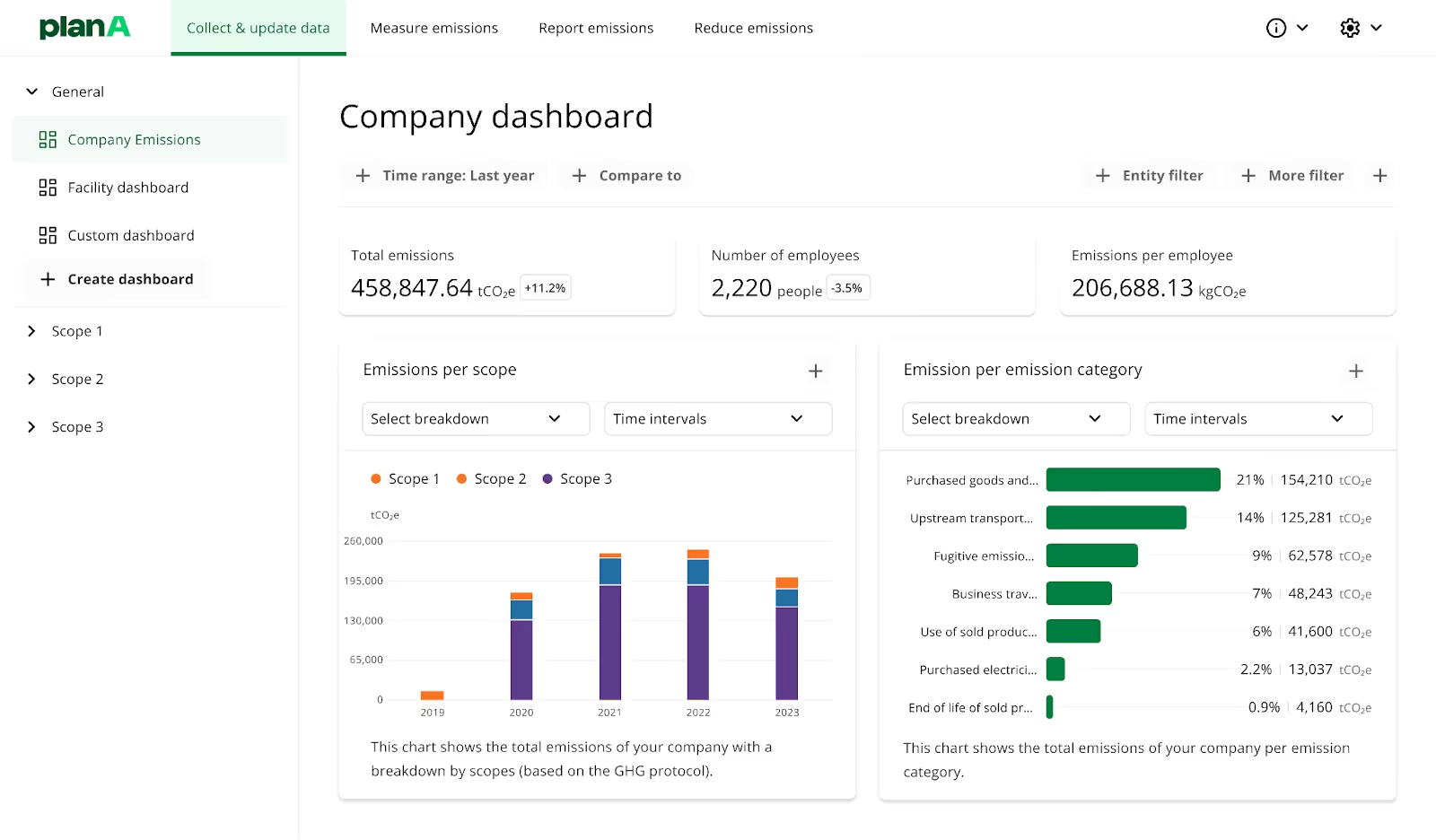
3. Comprehensive corporate emissions reporting
Facilitates thorough GHG data disclosures tailored to regulatory requirements, voluntary reporting frameworks, and value chain transparency. The software can generate reports in multiple formats, ranging from print-ready PDFs to detailed CSV files for in-depth analysis.

4. Advanced emissions reduction target setting
Supports businesses in defining and visualising their carbon reduction objectives, leveraging frameworks like Science-Based Targets (SBTs). The software offers clear graphs and charts to help organisations track their progress toward these targets over time.

5. Robust progress monitoring and analytics capacities
Delivers ongoing monitoring of carbon emissions and progress towards net-zero goals with intuitive dashboards. The advanced analytics capabilities empower sustainability teams to make data-driven decisions, ensuring continuous improvement in tracking their carbon footprint.

6. Strategic reduction action plans
Pinpoints critical areas where emissions can be cut and integrates Scope 3 data to develop holistic decarbonisation strategies. The software guides users through the process of planning and managing initiatives, enabling efficient reduction efforts throughout the entire value chain.
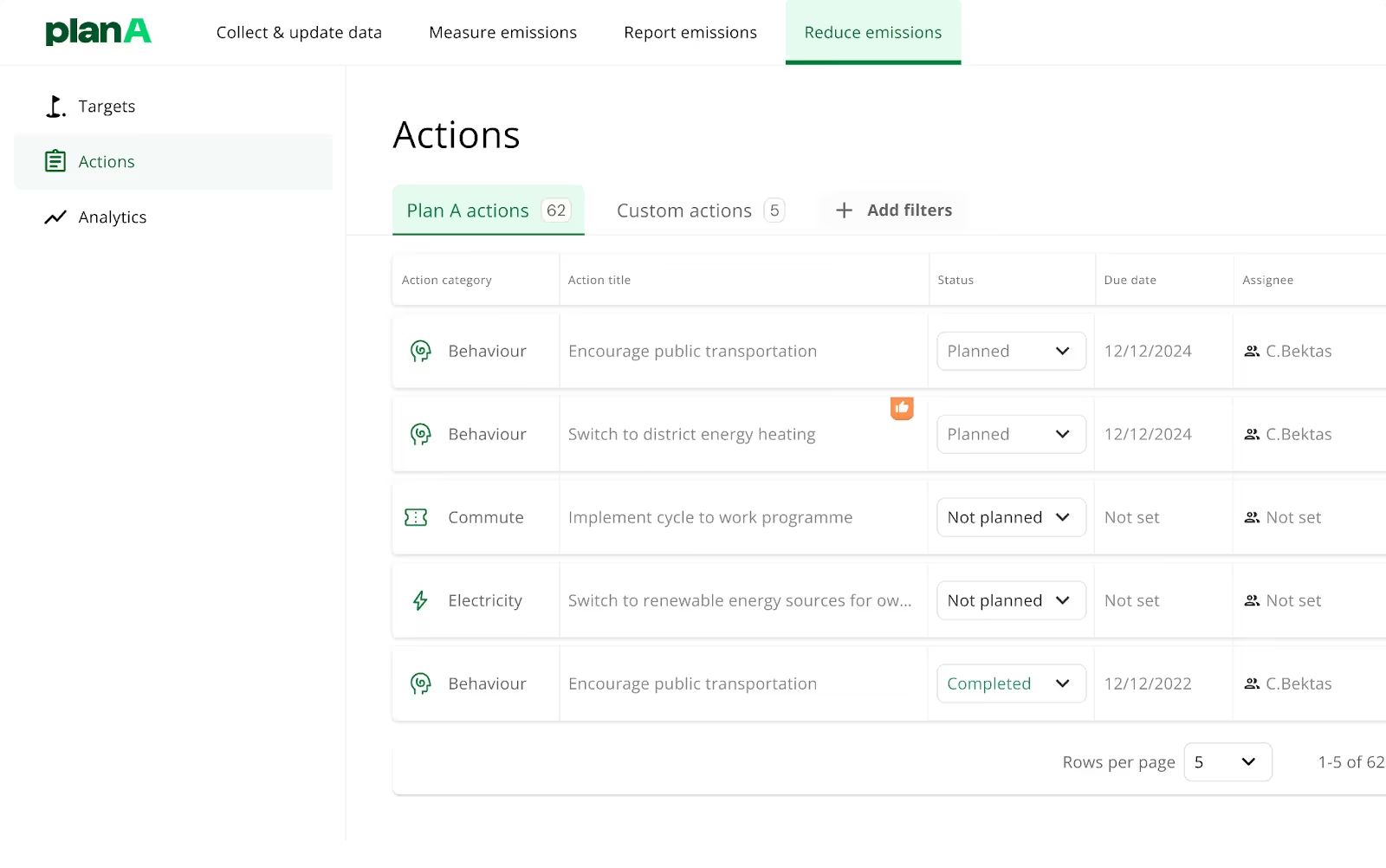
More details about essential features of carbon accounting software can be found in our dedicated article.
Still unsure which software is best to track your business' carbon footprint? Click here to learn more about Plan A’s leading carbon management platform.
Why use carbon tracking software instead of internal tools?
Many businesses rely on spreadsheets and fragmented data sources for emissions tracking, but these methods are often inaccurate and inefficient. According to a SAP survey, only a third of mid-market executives are confident in their data quality, with 86% still using spreadsheets for carbon tracking.
Specialised carbon tracking software automates data collection, improves accuracy, and simplifies reporting. Learn more about why you shouldn't track your carbon footprint with spreadsheets in our dedicated guide.
How to choose the right carbon tracking software for your company?
To select the best solution for your company’s sustainability strategy, consider asking these 12 key questions during your evaluation:
Businesses that ignore the shift towards sustainability may lose their competitive edge. It is crucial for companies to integrate carbon tracking software into their strategy, selecting a platform that is comprehensive, user-friendly, and geared towards decarbonisation.
Schedule a consultation with Plan A expertsto learn more about equipping your company with the best carbon tracking solution.


.jpg)


